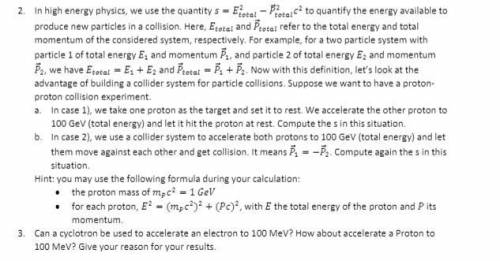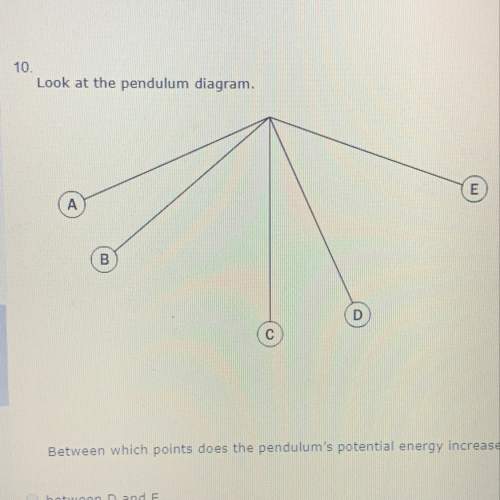
Physics, 04.04.2021 01:10 hei40563273
2a. In case 1), we take one proton as the target and set it to rest. We accelerate the other proton to 100 GeV (total energy) and let it hit the proton at rest. Compute the s in this situation.
b. In case 2), we use a collider system to accelerate both protons to 100 GeV (total energy) and let them move against each other and get collision. It means P1 = - P2. Compute again the s in this situation.
Hint: you may use the following formula during your calculation:
• the proton mass of m_p c^2 = 1 GeV
• for each proton, E^2 = (m_p c^2)^2 + (Pc)^2 with E the total energy of the proton and P its momentum.
3. Can a cyclotron be used to accelerate an electron to 100 MeV? How about accelerate a Proton to
100 MeV? Give your reason for your results.
Please serious answers only, I will flag you if you say you don't know and just want points. I really need the help and this is due tonight and my instructor didn't provide any help nor did my classmates.


Answers: 3


Another question on Physics

Physics, 22.06.2019 18:20
Object a has a length of 3 cm, a width of 2 cm, and a height of 4 cm. object b is dropped into a graduated cylinder. it displaces 19 ml of water. the volume of object a is: a: greater than the volume of object b b: less than the volume of object b c: equal to the volume of object b
Answers: 2

Physics, 22.06.2019 19:30
Point charges q1=+2.00μc and q2=−2.00μc are placed at adjacent corners of a square for which the length of each side is 1.50 cm . point a is at the center of the square, and point b is at the empty corner closest to q2. take the electric potential to be zero at a distance far from both charges. part a what is the electric potential at point a due to q1 and q2? express your answer with the appropriate units.
Answers: 2

Physics, 22.06.2019 20:10
Consider two less-than-desirable options. in the first you are driving 30 mph and crash head-on into an identical car also going 30 mph. in the second option you are driving 30 mph and crash head-on into a stationary brick wall. in neither case does your car bounce off the thing it hits, and the collision time is the same in both cases. which of these two situations would result in the greatest impact force?
Answers: 1

Physics, 22.06.2019 22:00
Hat is the most commonly cited cause of occupational injuries in the healthcare sector? a. repositioning of patients b. manual pipetting c. slips and trips d. workplace violence
Answers: 3
You know the right answer?
2a. In case 1), we take one proton as the target and set it to rest. We accelerate the other proton...
Questions







English, 26.09.2019 03:21

Mathematics, 26.09.2019 03:21


Spanish, 26.09.2019 03:21


Mathematics, 26.09.2019 03:21


Computers and Technology, 26.09.2019 03:21










